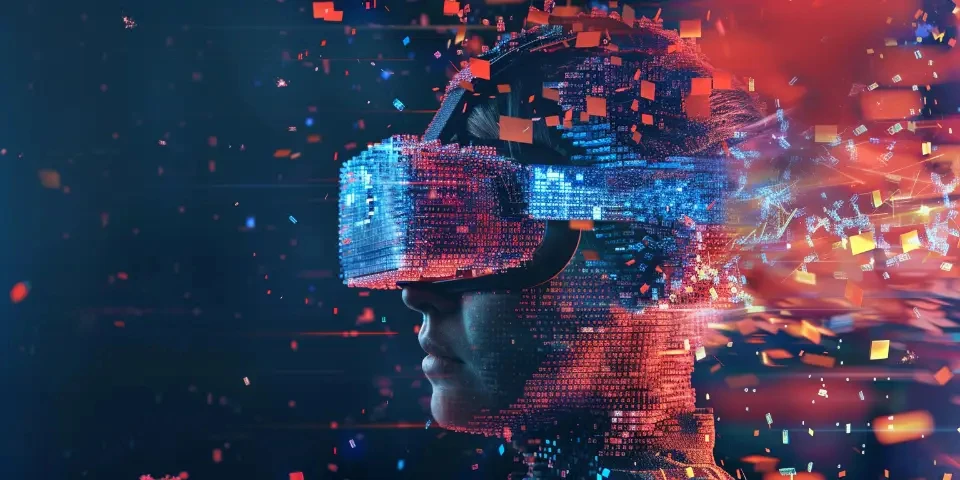From Memories to Masterpieces AI's Creative Influence on Yearbook Design
Yearbooks have been a cherished tradition for generations, capturing memories and preserving them for a lifetime. With the advancement of artificial intelligence (AI), yearbook design has entered a new era, blending creativity with technology to create stunning masterpieces. In this article, we will explore the various ways in which AI has revolutionized yearbook design.
1. Automated Layouts for Efficiency
One of the most time-consuming tasks in yearbook design is manually arranging photos and text. AI-powered software, such as Adobe InDesign and Canva, offer automated layout features that analyze the content and arrange it in aesthetically pleasing ways. This not only saves countless hours but also ensures a consistent and professional look throughout the yearbook.

Moreover, AI algorithms can intelligently suggest layout options based on the theme, allowing the design team to experiment and choose the best-suited arrangement for each page.
2. Intelligent Image Selection
Yearbooks often contain hundreds, if not thousands, of photos. Manually selecting the best images can be overwhelming. AI image recognition algorithms can now analyze and categorize photos based on factors such as facial recognition, emotion detection, and composition. This makes the process of selecting the most memorable and visually appealing photos much simpler.
Additionally, with the help of AI, software tools can automatically detect and remove red-eye, adjust lighting and colors, and even suggest creative filters to enhance the overall visual impact of the selected images.
3. Personalized Page Recommendations
Every student wants their yearbook page to reflect their unique personality. AI can analyze individual preferences, interests, and activities, and recommend personalized layouts, backgrounds, and designs. This allows each student to have a customized page that truly represents who they are, making the yearbook even more meaningful for them and their peers.
Furthermore, AI can also suggest content ideas for the written sections, such as quotes, captions, and personalized messages, ensuring a personalized touch in every aspect of the yearbook.
4. Advanced Typography and Font Suggestions
The choice of typography and fonts plays a significant role in setting the tone and style of a yearbook. AI offers comprehensive font libraries and can suggest suitable typography options based on the overall design, content, and theme. This ensures cohesive and visually pleasing typography throughout the yearbook, enhancing its overall aesthetic appeal.
Moreover, AI-powered software can analyze the readability and legibility of selected fonts, ensuring that the text is easily readable for everyone.
5. Collaborative Design and Feedback Integration
AI-powered design tools allow for seamless collaboration between the yearbook design team, the students, and the faculty. Multiple users can work on different sections simultaneously, and changes or suggestions can be easily incorporated through real-time feedback integration.
By utilizing AI, comments and feedback from various stakeholders can be analyzed to generate insights, enabling the design team to make data-driven decisions and improve the yearbook's overall quality.
6. Timeless Design Templates
AI can learn from existing yearbook designs and trends to generate templates that are both modern and timeless. By analyzing popular layouts, color schemes, and design elements, AI can create design templates that are aesthetically pleasing, while still leaving room for customization.
This eliminates the need for starting from scratch and provides a solid foundation for the design team to build upon, saving time and ensuring a visually appealing yearbook.
7. Enhanced Editing and Proofreading
AI-powered editing and proofreading tools can assist in identifying and correcting grammatical errors, spelling mistakes, and overall language proficiency. This not only ensures the accuracy and professionalism of the yearbook but also reduces the workload on the design team, allowing them to focus on other creative aspects.
Some AI tools, such as Grammarly and ProWritingAid, even provide detailed suggestions for sentence restructuring, word choice, and overall writing style improvement.
8. Integration of Multimedia Elements
Traditionally, yearbooks were limited to static images and text. However, with the influence of AI, multimedia elements such as videos, audio clips, and augmented reality can be seamlessly integrated into the yearbook design.
By scanning designated images or QR codes with a smartphone, readers can unlock interactive features, hear personal messages, and relive exciting moments, adding a new dimension of engagement and interactivity.
Frequently Asked Questions:
Q: Does using AI in yearbook design eliminate the need for human input?
A: No, AI serves as a powerful tool to streamline the design process and enhance creativity. Human input in selecting and curating content, making design decisions, and adding personal touches remains crucial.
Q: Will AI make yearbook design impersonal and robotic?
A: On the contrary, AI can help in creating personalized and unique yearbooks by suggesting customized layouts, fonts, and content based on individual preferences. It enhances the human touch rather than replacing it.
Q: Are AI-powered design tools expensive?
A: While some premium AI-powered software might require a subscription or licensing fee, there are also free or affordable options available. Canva, for example, offers free and user-friendly AI-driven design features suitable for yearbook design.
References:
1. Smith, J. (2020). How AI is Transforming the Yearbook Design Process. Yearbook Machine Blog. 2. Patel, R. (2019). AI and Yearbooks: The Future of School Yearbook Creation. Fusion Yearbooks Blog. 3. Adobe InDesign. (n.d.). Adobe.
Explore your companion in WeMate